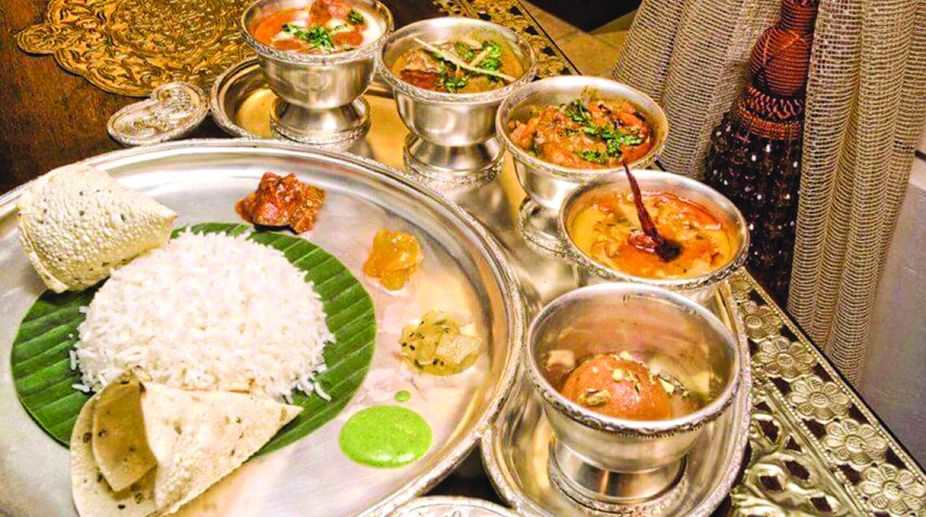Savour the flavours of the Middle East
K3 at JW Marriott, New Delhi Aerocity presents the inaugural Al Souk Arabic Food Festival

Stepping forward to put out a delectable range of Awadhi cuisine for visitors during the current months of international conferences and “shaadi season”, the Ashok Hotel, the over 60-year-old flagship hotel of the India Tourism Development Corporation (ITDC) in the Capital, has thoughtfully revived the recipes used by its former masterchefs through the decades. This is served in the cheerful ambiance of the “Oudh” restaurant, at 70 per cent cost of items on the regular menu.
One recalls “Dastar Khwan-e-Awadh” food festival in the Ashok Hotel in the late 1990s, which had seen chefs on the staff exercise their culinary skills to table exquisite delicacies reminiscent of the era of leisure, extravagance and gastronomic elegance of the Nawabs of Oudh ~ in the 18th to 19th century region around Lucknow. Incidentally, a slice of sedentary, polite, “tehzeebi” life during the declining medieval ambiance in Awadh was graphically mirrored in prolific author and filmmaker Satyajit Ray’s 1977 Technicolor classic Shatranj ke Khilari (The chess players), based on celebrated early 20th century playwright and novelist Munshi Prem Chand’s short story.
Oudh’s last and 10th Nawab ~ the portly potentate Wajid Ali Shah ~ was a connoisseur of art, culture and cuisine. It was during his time that several bawarchi khanas (kitchens) flourished. He was a playwright, poet and composer. He wrote ragas, ghazals, thumris, like the much-loved “Babul mora naihar chchooto jaay…”, besides the play Radha Kanhaiyu Ka Kaissu, cited in the history of Hindustani theatre. He transformed the Avadh capital Lucknow, into a thriving centre of music, dance, literary arts and theatre and is widely credited with the revival of the Lucknow Gharana Kathak as a major form of classical Indian dance.
Advertisement
Nawab Wajid Ali Shah reigned from 1847 to 1856, when he was deposed by the British East India Company to annexe Awadh and exiled to Matiaburj, a village near Kolkata with a meager monthly stipend. The delicious recipes of that elegant and fine dining era were preserved with diligence by descendents of those nawabi era chefs, who had catered to princely palates.
During the mid-1960s, an erstwhile Punjabi chef of ITDC’s subsequently privatised Ranjit Hotel, south of Turkman Gate, had in an old book shop in the Walled City, found a well- bound notebook of hand written Mughal era recipes in Urdu, based on caravan serai offerings on Central Asian trade routes. He forever fretted not being posted in a more centrally-located hotel in Lutyen’s Delhi, where his culinary creations would have had opportunities for wider exposure. His family may still have that rare manuscript.
Advertisement